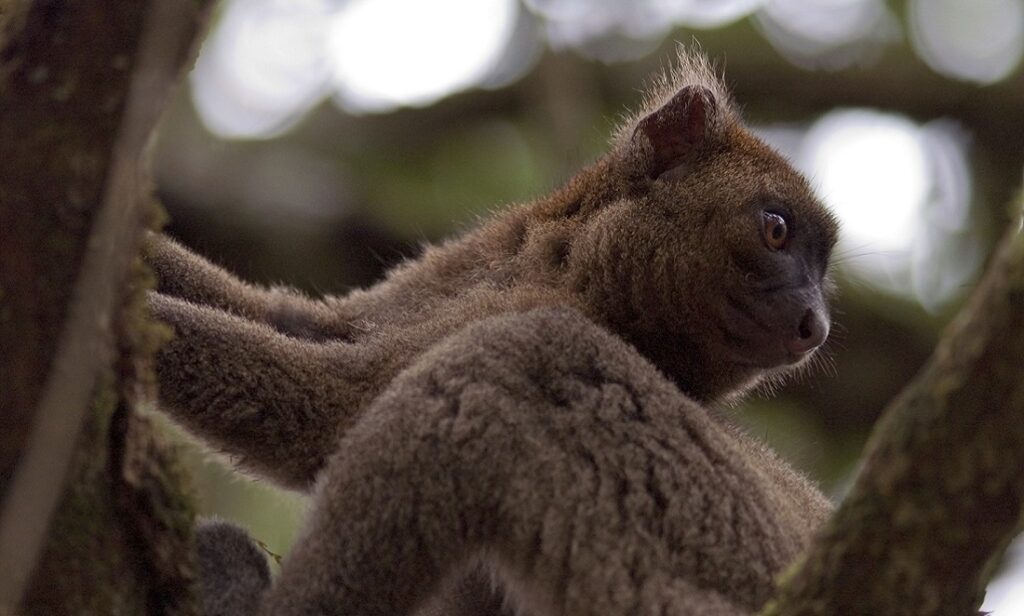Madagascar is famous for its unique fauna, which includes more than 100 endemic lemur species, most of them endangered.
“The diversity of lemurs is astounding, some living in rainforests while others in semi-desert areas of Madagascar,” says Alistair Evans at Monash University.
“Lemurs have found a lot of different ways to make a living in their environment,” he adds.
Making it work
The greater bamboo lemur is an extreme example. It feeds exclusively on a single bamboo species, and its favourite bits are the tender and nutritious young bamboo shoots.

But fresh shoots are only available during the wet season. During the dry season, these lemurs have to do with the less tasty culm or woody trunk of the bamboo, which is less nutritious.
Luckily, they have specialised teeth for gnawing on the hard culm. But they can’t survive for very long on such harsh diet, experts warn.

A new study found that climate change may lead to longer periods of dry weather in Madagascar. This means lemurs will have to survive on culm for longer.
“For extreme feeding specialists like the greater bamboo lemur, climate change can be a stealthy killer,” says Patricia Wright at Stony Brook University, one of the authors.
“Making the lemurs rely on a suboptimal part of their food for just a bit longer may be enough to tip the balance from existence to extinction.”
And it is not just about the lemurs.
What do pandas and lemurs have in common?
No, it is not a riddle. Pandas and lemurs, despite being totally unrelated species and living continents apart, do share one thing: their teeth.
Much like the greater bamboo lemur, pandas are specialised in feeding from bamboo. Climate change may affect bamboo feeders like lemurs and pandas by altering their feeding patterns.
“By studying specialists like the greater bamboo lemur, we can identify the different ways that climate change can cause extinction,” says author Jukka Jernvall at the University of Helsinki.
“And if we do not study these endangered species now, they may go extinct before we know all the reasons why, and we’ll be less able to protect what remains.”
The next step is to focus on conservation of the remaining lemurs by building bamboo corridors to connect the remaining populations and expanding their habitats says Alistair.











